You have no items in your shopping cart
The most common causes of damage to drainage channels in a heavily loaded area are emerging horizontal and shear forces which, depending on the load, can lead to material fatigue of the channel element, the frames and the cover grilles. The HYDROblock® system made of robust, nodular cast iron is suitable for load class F 900. The monolithic construction with integrated sleeve seal reduces noise emissions and simplifies liquid-tight installation.
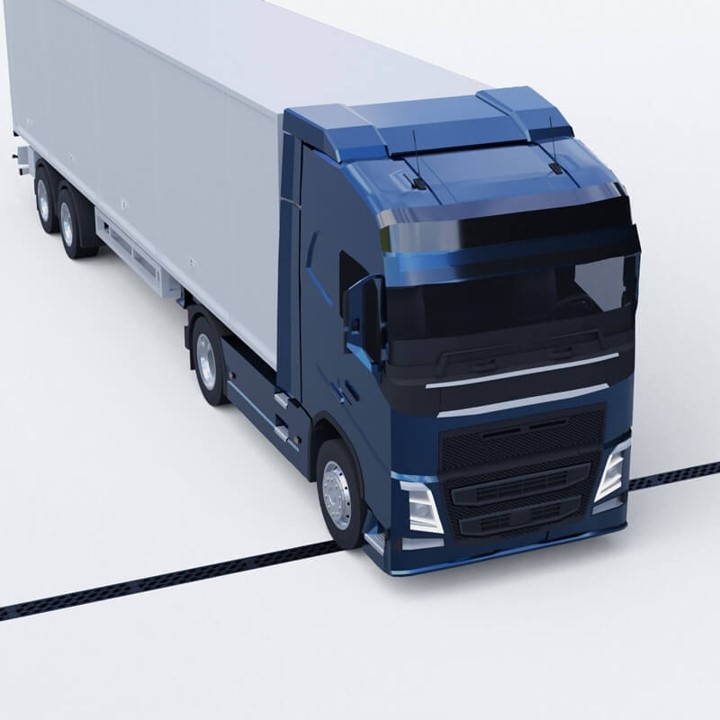 |
 |
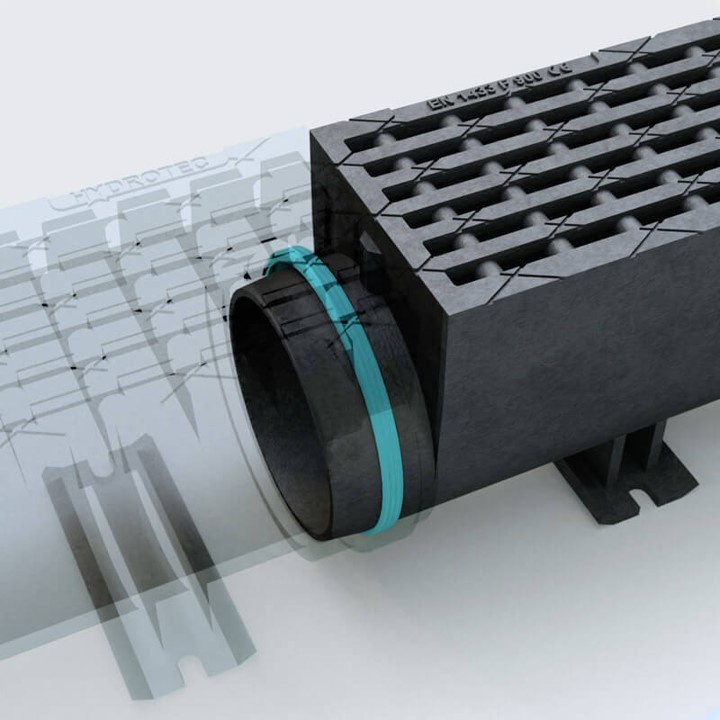 |
 |
Ideal for cross-traffic trafficThe gutter is resistant to the highest forms of loading (class F 900) and is optimally suited for traffic in longitudinal and transverse directions. |
Rattle freeThe gutter is rattle-free during use due to its monolithic construction.
|
Sleeve sealThe HYDROblock has a unique connection that guarantees simple and tight installation thanks to the integrated NBR sleeve seal.
|
Pedestrian designThe pedestrian design with a slot width of 12 mm (standard 22 mm) is optionally available.
|
More benefits
 |
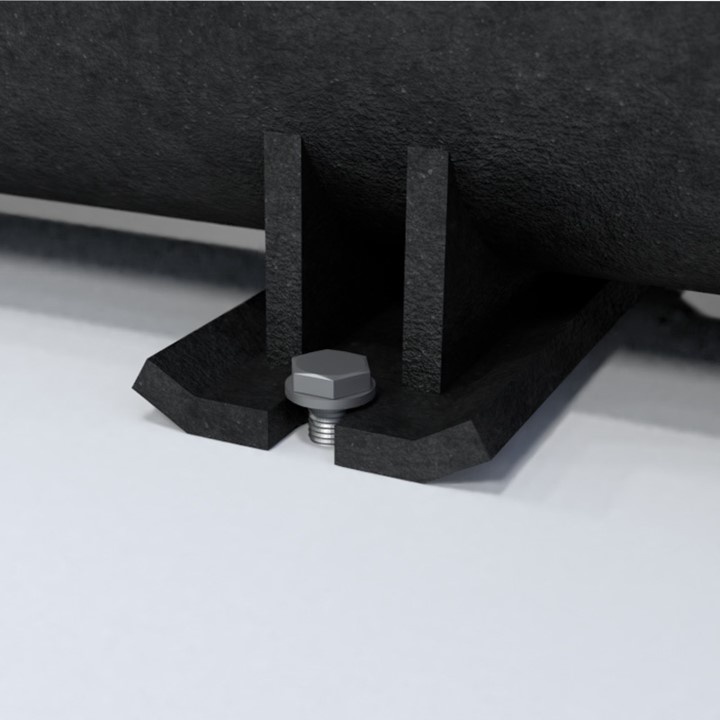 |
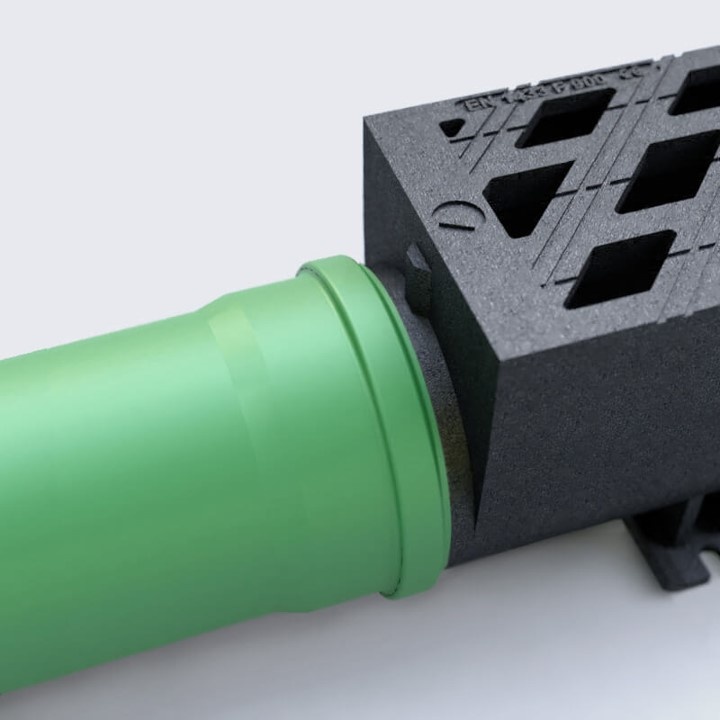 |
 |
Cost savingsCompared to TYPE M channels, the HYDROblock does not require a concrete casing. This means that 55% of installation costs can be saved. The channel can be asphalted or paved directly. |
AnchoringThe pedestals can also be anchored to the foundation, creating an extremely strong connection.
|
Reliable sealingThe spigot end of the gutter can be connected to standard plastic pipes.
|
Direction of flowThe marking of the flow direction ensures easier installation of the gutter elements.
|
References
 |
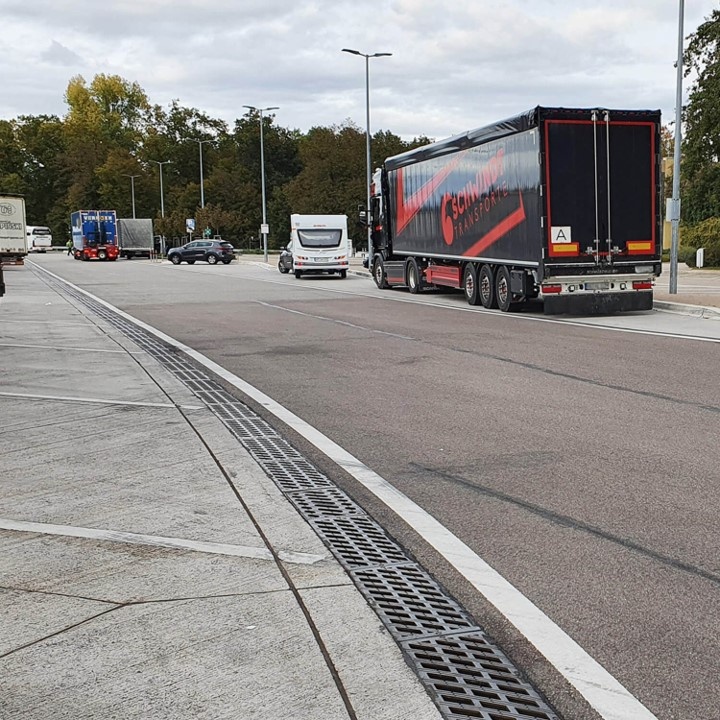 |
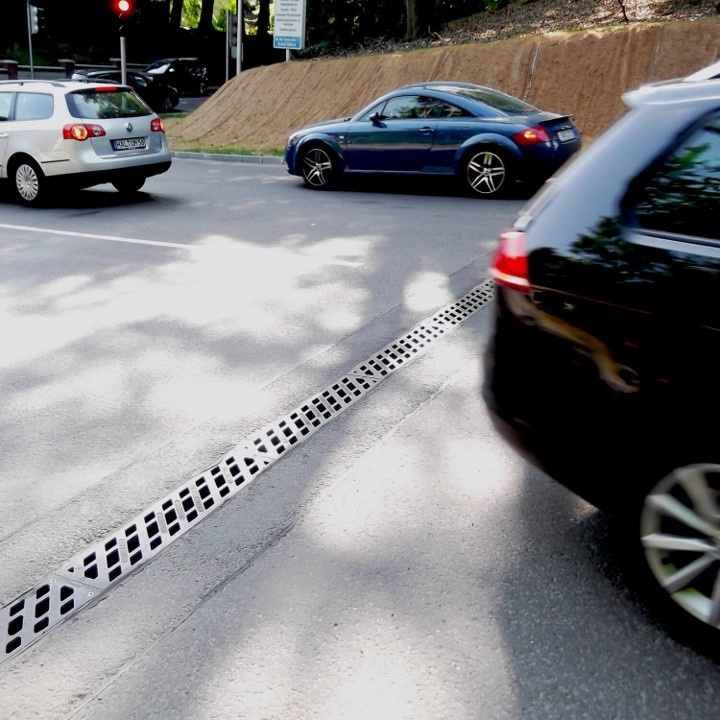 |
| Heavy industry | Rest areas | Cross-application in roads |
The signs point to expansion
METRANS Rail Deutschland GmbH demonstrates foresight in the truest sense of the word. The 100% subsidiary of METRANS as provides traction services for block train transports with sea containers and other loading units on the German rail network. With the paving of the container transhipment point in the Metrans port of Königs Wusterhausen, the rail transport company is expanding its logistics areas, under ecological aspects in the designated drinking water protection zone here.
Drainage of large areas with special requirementsLogistics areas, often with a size of several thousand square meters such as in the port of Metrans, place high demands on the design of the surfaces. It is important that the surfaces used by ground vehicles (e.g. reach stackers) are absolutely flat. At the same time, a drainage system must ensure that surface water and possibly liquids from containers are safely drained or temporarily collected in the event of an accident. |
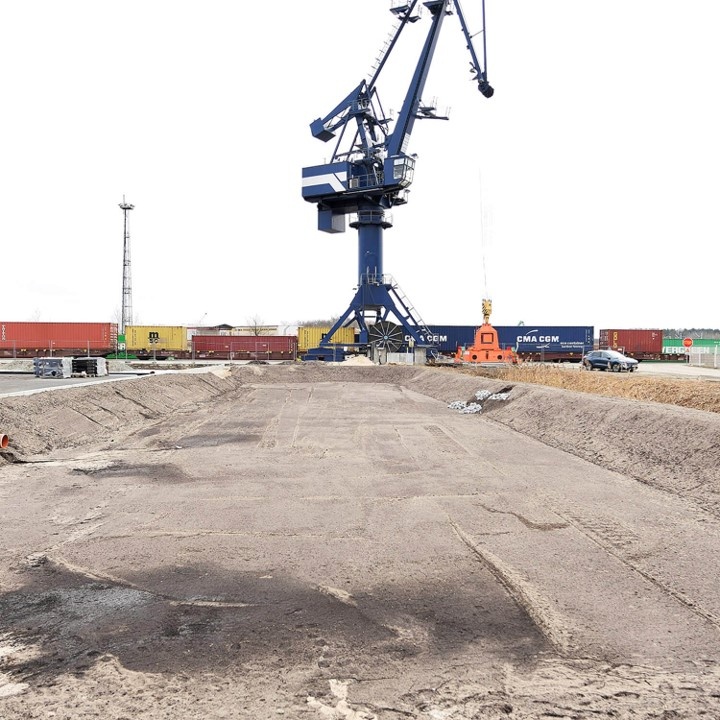 |
 |
The surface area of approximately 7,000 m² used by METRANS is drained via two channels with a total length of approximately 290 m. The surface water is collected in a pumping well. Connected by a closable collection pipe, which runs parallel to an infiltration trough, the surface water is led to a foreshaft with a pumping well. From here, the water is led to the marsh. In the event of an accident, this arrangement of components can retain the contaminated water until it is pumped away. The structure of the marsh, with a volume of approximately 50 m x 17 m and a water retention height of 55 cm, calculated on the basis of 30 years of rainfall, meets the requirements of ecological rainwater management. Drainage pipes with a slope, enclosed by a gravel layer with a cover of 20 cm, lead the water to a ditch that ends in the Notte canal. The 30 cm thick topsoil layer above the gravel package serves as a revitalized soil zone through which the water seeps/seeps and binds the pollutants carried in the soil. An emergency overflow, which is also connected to the channel, protects the channel from flooding in the event of extreme rainfall. |
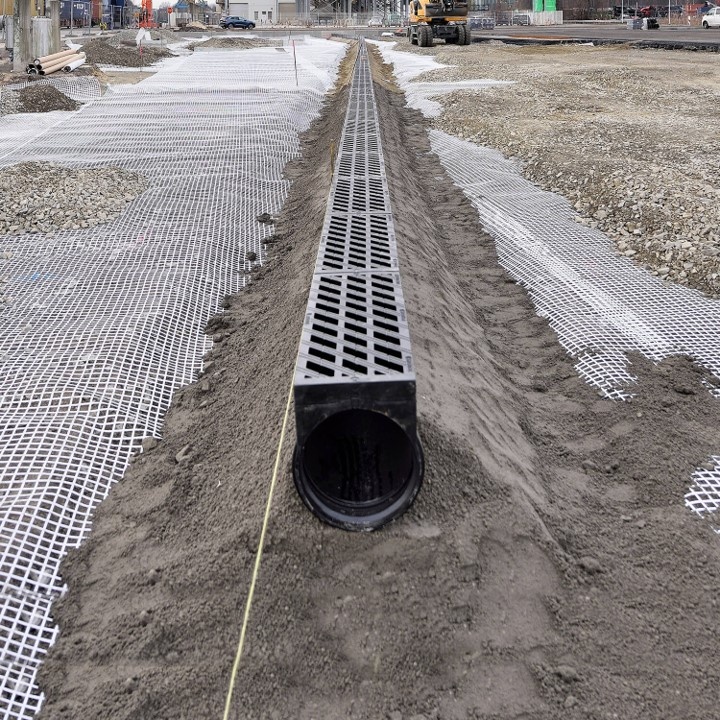 |
 |
|
The HYDROblock system in the nominal width of 300 mm is ideally suited for heavily loaded areas. |
The drainage channel allows for a tight installation with the integrated NBR sleeve seal. |
Heavy-duty drainage channel made of nodular cast ironThe decisive factor for dispensing with conventional, underground cleaning systems for surface water treatment is the unfavourable subsoil in the harbour area of Königs Wusterhausen, which has a high settlement potential. Taking into account the previously described requirements for the drainage system, the designers decided to use drainage channels of the type HYDROblock DN 300 with an inlet cross-section of 1,191 cm²/m. The installation of this drainage system is not only advantageous in terms of the monolithic construction. Thanks to the material EN-GJS-500 (nodular cast iron), it also offers significant advantages over other materials in terms of material fatigue, especially in the heavy load range. |
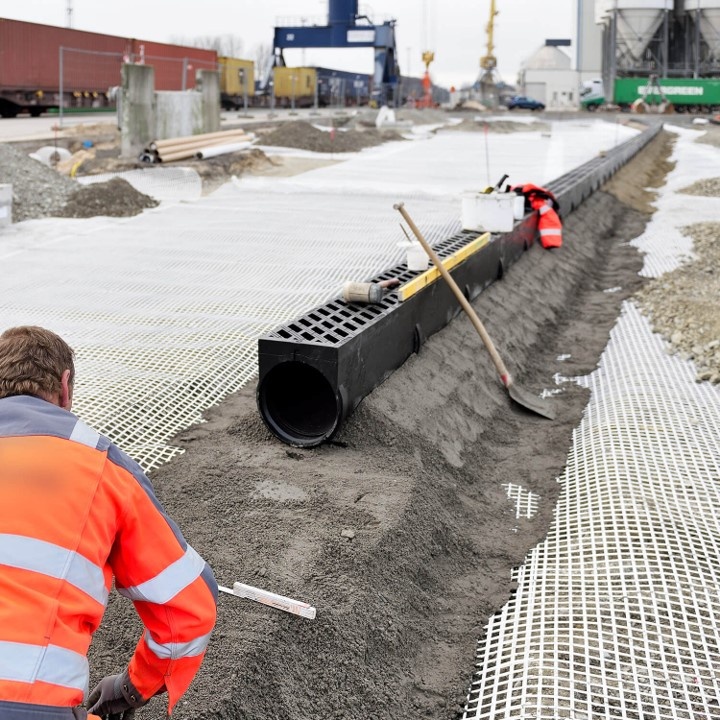 |
 |
 |
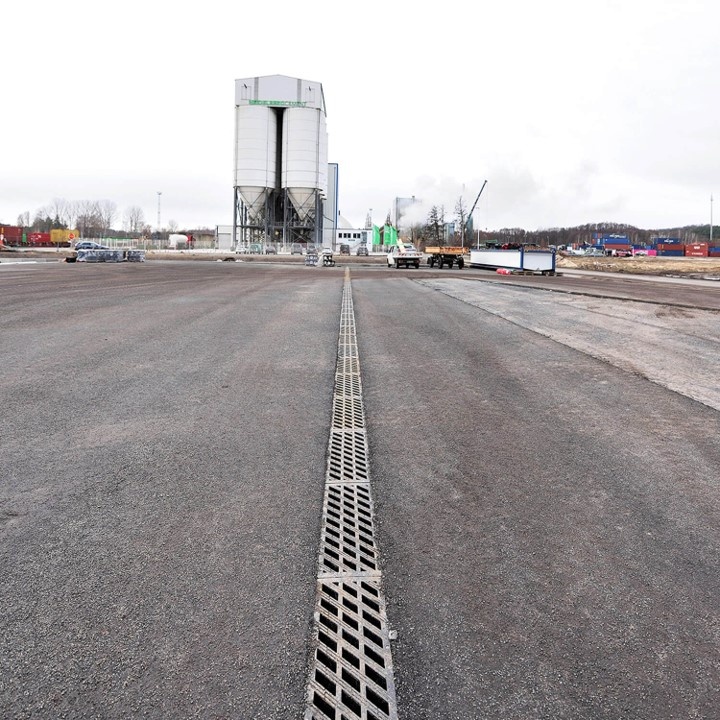 |
Step by step installation instructions
What needs to be taken into account for the optimal installation of the HYDROblock? The installation instructions for asphalt and paving according to DIN EN 1433 provide an answer to this question.
Drainage channel HYDROblock - installation instructions paving
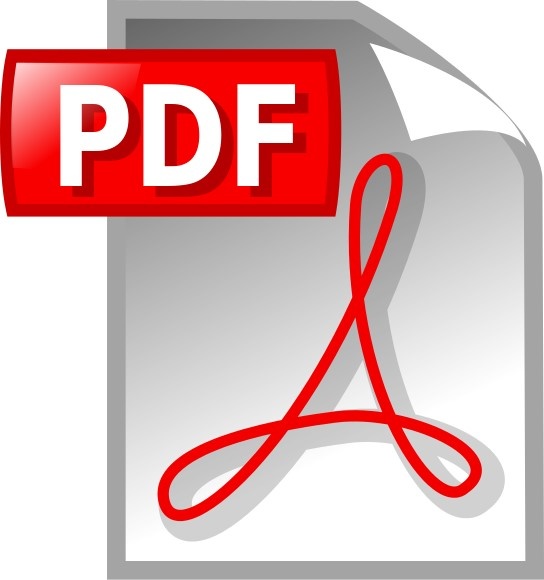 Download the installation instructions for the HYDROblock here
Download the installation instructions for the HYDROblock here
Installation direction
| The installation direction of the gutters is always against the flow direction and starts at the connection to the base pipe or at the sand trap element. If the elements are laid in two different directions, the profile groove must be removed with a flex or end walls must be used at the meeting of the elements to prevent a gap. When laying, it must generally be ensured that the individual gutter elements are installed vertically and not pushed against each other! | 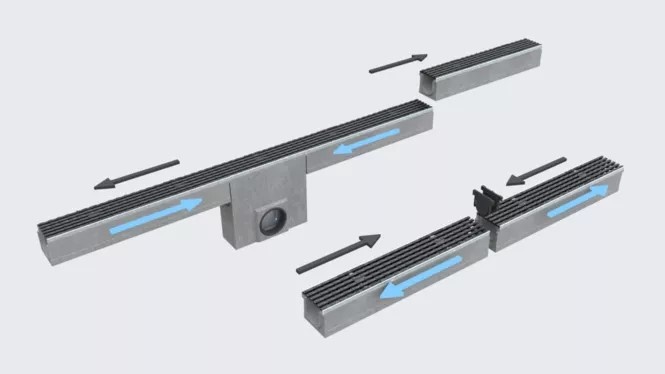 |
| Flow direction = blue arrows, laying direction = black arrows |
Principles of Drainage Channel Construction
- All delivered parts must be checked for perfect condition. Damaged parts must not be installed!
- The choice of the most suitable installation method for your case is the responsibility of the commissioned specialist consultancy firm, which has the necessary knowledge to assess the situation.
- The type of installation of the drainage channels depends on the installation locations with the associated traffic load and the planned hardening. The installation locations are divided into classes A 15 to F 900 in EN 1433. From class C, all cover grilles must be secured in a traffic-safe manner. The foundation of the drainage channels must be in accordance with the traffic load.
- Horizontal loads from traffic or the thermal behaviour of the pavement must be absorbed by a sufficiently dimensioned concrete lining of the gutter bodies and by expansion joints that are applied in the longitudinal direction of the gutter, in particular in adjacent concrete surfaces. Joints transverse to the gutter series must always be applied to the gutter joint. The installation direction of the gutters always runs against the flow direction and starts at the connection to the sewer.
- Adjacent paving must be placed 5 mm higher than the surface of the cover grid or edge protection, taking into account subsequent settlement and subsidence. Appropriate measures must be taken to prevent the road surface and gutters from washing away and flooding.
- Where extreme horizontal forces are expected across the drainage channel, e.g. at road crossings, slip roads or on motorways, the drainage channels must be laterally secured with reinforced road surface concrete.
Load classes according to DIN EN 1433
 |
 |
 |
 |
 |
 |
| Class A 15 | Class B 125 | Class C 250 | Class D 400 | Class E 600 | Class F 900 |
| Footpaths, cycle paths, green areas | Pedestrian zones, parking lots | Roadsides, parking spaces | Public roads and parking lots | Industry, defense, high wheel loads | Airports, industrial estates, very high wheel loads |
 Download the HYDROblock brochure here
Download the HYDROblock brochure here







